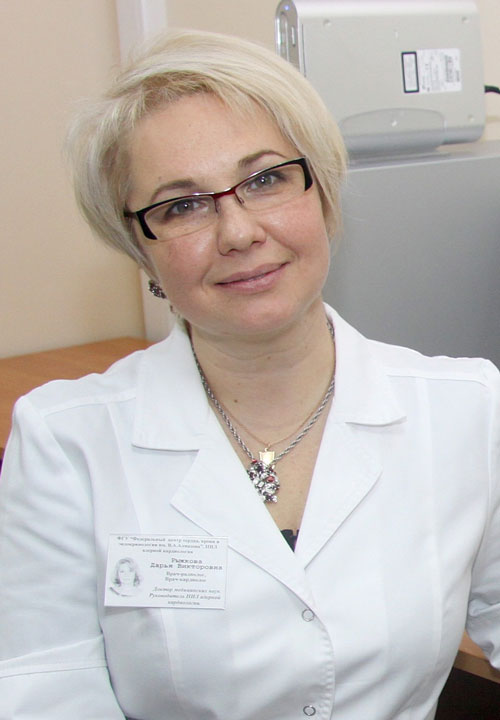Department of Nuclear Medicine and Theranostics with Radiopharmaceutical Development Group

 Darya Ryzhkova, MD, DSc
Darya Ryzhkova, MD, DScChief Researcher
Professor of the RAS
Structure
- Radiopharmaceutical Development Group
Objectives
- Studying the diagnostic effectiveness of radionuclide imaging methods in patients with internal diseases.
- Developing and implementing the modern radioisotope techniques, new radiopharmaceuticals and software applications for the processing of diagnostic and research data.
Major research areas
- Developing radiosynthesis methods and creating the quality standard for radiopharmaceuticals based on cyclotron and generator-produced positron-emitting isotopes.
- Enhancing the preparation methods, development of optimal scanning protocols and introduction of radioisotope technologies
- Developing and improving the protocols for radionuclide studies and computed tomography to reduce the exposure of patients and medical staff to ionizing radiation.
Major achievements
- Improvement of radiochemical synthesis methods and creation of a quality standard for [18F]-based radiopharmaceuticals: [18F]-fluoromisonidazole ([18F]FMISO) and [18F]L- dihydroxyphenylalanine ([18F]DOPA).
- Improvement of the technology for producing [13N]-ammonia.
- Modification of the anion-exchange technique for concentrating 68Ga isotope.
- Creation of an automatic synthesis module for 68Ga-based radiopharmaceuticals.
- Improvement and introduction of radioisotope techniques:
— 18F-FDG PET/CT to diagnose inflammatory heart diseases and pituitary microadenomas.
—18F-DOPA PET/CT for differential diagnosis of diffuse and focal forms of congenital hyperinsulinism, neuroendocrine tumors.
— 13N-ammonia PET/CT at rest and stress in combination with MSCT coronary angiography to assess the functional extent of coronary atherosclerosis, diagnose microvascular cardiac disease and assess the effectiveness of reconstructive cardiovascular surgery.
— 18F-sodium fluoride PET/CT to predict the progression of aortic valve stenosis.
— Contrast-enhanced 18F-FDG PET/CT for differential diagnosis of cardiac tumors.
- Development of methodological guidelines on radiation safety for radiology procedures.
- The Research Department for Nuclear Medicine and Theranostics together with Radiopharmaceutical Production Department, Radiopharmaceutical Quality Control Department and Radioisotope Imaging/PET Department are comprised in the Nuclear Medicine Research Unit. Specialists of the Research Department have published more than 130 articles in peer-reviewed journals, authored chapters in 9 monographs and guidelines, gave more than 200 presentations at national and international conferences, filed 9 patents for invention.
International collaboration
The Research Department is engaged in international collaboration with PET centres of Turku (Finland).
It is a member of the European Association of Nuclear Medicine.
Antuganov D, Zykov M, Timofeev V et al. Copper‐mediated radiofluorination of aryl pinacolboronate esters: a straightforward protocol by using pyridinium sulfonates. European journal of organic chemistry. 2019; 5: 918–922. DOI:10.1002/ejoc.201801514.
Antuganov D, Timofeev V, Timofeeva K et al. Evaluation of protic ionic liquids based on triethanolammonium and Tris (hydroxymethyl) methylammonium salts as buffers for Ga-68-radiolabelling of PSMA-HBED-CC. Chemistry select. 2019; 4 (43): 12524–12527. DOI: 10.1002/slct.201902588.
Antuganov D, Antuganova Y, Zykova T et al. Use of capillary electrophoresis for the determination of impurities in preparations of fluorine-18 labelled PET radiopharmaceuticals. Journal of pharmaceutical and biomedical analysis. 2019; 173: 68–74. DOI: 10.1016/j.jpba.2019.05.016.
Antuganov D, Zykov M, Timofeeva K et al. Effect of Pyridine Addition on the Efficiency of Copper-Mediated Radiofluorination of Aryl Pinacol Boronates. 2017; 2 (26): 7909–7912. DOI.10.1002/slct.201701628.
Budanova M, Mitrofanova L, Kozlenok A, et al. Ventricular tachycardia as the first manifestation of churg-strauss syndrome. Journal of cardiology cases. 2017; 15 (2): 61–64.
